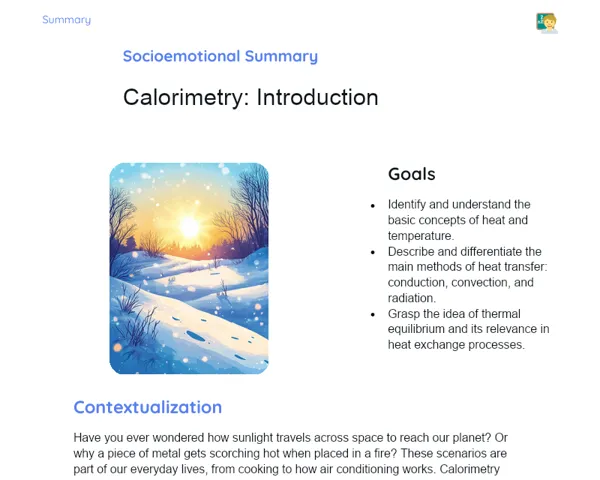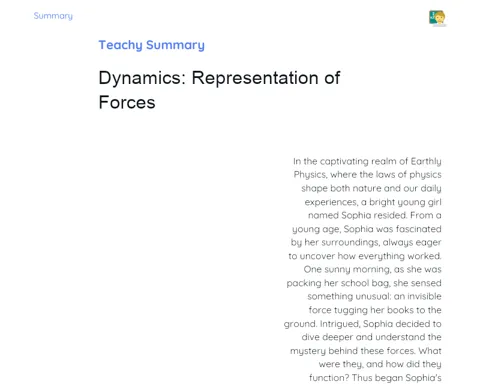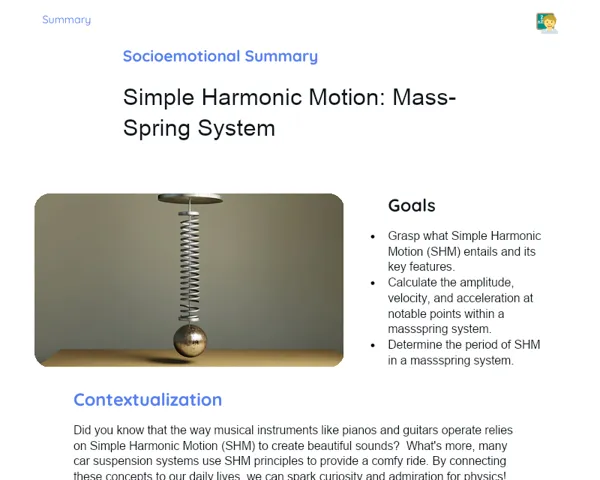Goals
1. Understand the wave propagation speed formula (v = λf) and its variables.
2. Calculate the speed of a wave based on given wavelength and frequency.
3. Recognize the significance of the wave speed formula in practical applications and the job market.
Contextualization
Waves are all around us in different forms: from sound waves that let us enjoy music to electromagnetic waves that enable communication through radios and mobile phones. Grasping how these waves travel is crucial for a wide range of tech applications, like developing the latest communication gear and improving sound quality in various settings. In this lesson, we’ll delve into how to calculate wave velocity and why it matters. For example, when designing a cinema, accurate sound speed calculations are key to crafting an enhanced acoustic experience. Telecommunications engineers use wave speed formulas to tweak transmission frequencies and optimise the performance of internet and phone networks.
Subject Relevance
To Remember!
Wave Propagation Speed
The speed at which a wave moves through a medium. It’s defined by the formula v = λf, where 'v' is the speed, 'λ' is the wavelength, and 'f' is the frequency. The speed can differ based on the medium—be it air, water, or metal.
-
Formula: v = λf
-
Depends on the medium it travels through
-
Crucial for calculations in telecommunications and acoustics
Wavelength (λ)
The wavelength represents the distance between two consecutive points in phase of a wave, like two peaks or two troughs. It's denoted by the Greek letter lambda (λ) and is measured in meters. Wavelength is inversely related to wave frequency.
-
Expressed as λ
-
Measured in meters
-
Inversely proportional to frequency
Frequency (f)
Frequency is how many cycles a wave completes in one second. Measured in Hertz (Hz), it's represented by 'f'. Higher frequencies equate to shorter, more energetic waves.
-
Represented by f
-
Measured in Hertz (Hz)
-
Connected to the wave's energy
Practical Applications
-
In telecommunications, the wave speed formula helps adjust transmission frequencies and ensures internet and phone networks work efficiently.
-
In acoustics, knowing sound speed is fundamental for designing venues like concert halls and cinemas to optimise sound quality.
-
In medical technology, particularly ultrasound devices, it’s crucial to understand wave speeds through various tissues for accurate diagnostics.
Key Terms
-
Wave propagation speed: The speed a wave travels through a medium, defined by the formula v = λf.
-
Wavelength (λ): The distance between two equal points in a wave, measured in meters.
-
Frequency (f): The number of cycles a wave completes each second, measured in Hertz (Hz).
Questions for Reflections
-
How can we enhance communication networks using knowledge of wave propagation speed?
-
How does sound speed calculation shape the design of acoustic spaces?
-
What errors might arise when measuring sound speed in a practical experiment, and how can we minimise them?
Practical Challenge: Measuring the Speed of Sound
In this mini-challenge, you’ll get to measure sound speed using a straightforward and practical approach. This activity will reinforce your grasp of the formula v = λf and how to implement it in a hands-on experiment.
Instructions
-
Select a clear outdoor area free of obstacles to conduct the experiment.
-
With a partner, stand a known distance apart (e.g., 100 meters).
-
One person should create a loud sound (like striking stones together) while the other times the interval between seeing the action and hearing the sound.
-
Repeat the experiment at least three times to find an average measurement.
-
Using the known distance and the averaged time, apply the formula v = d/t (where 'd' is distance and 't' is time) to calculate the speed of sound.
-
Compare your result to the known speed of sound in air (around 343 m/s) and discuss potential errors and variations in your findings.



